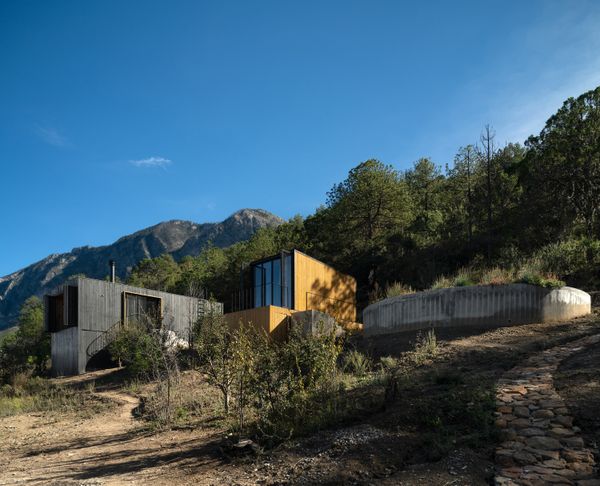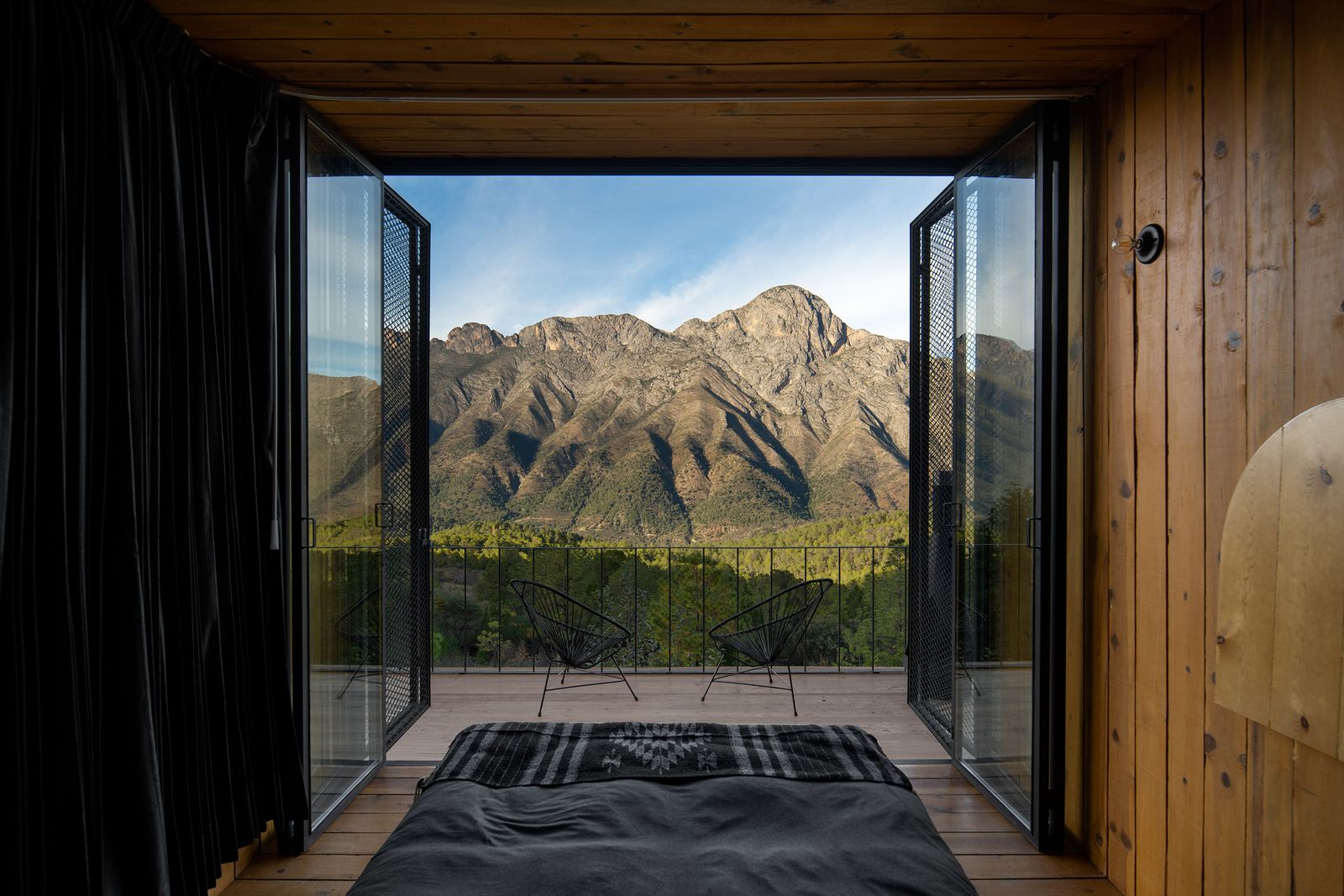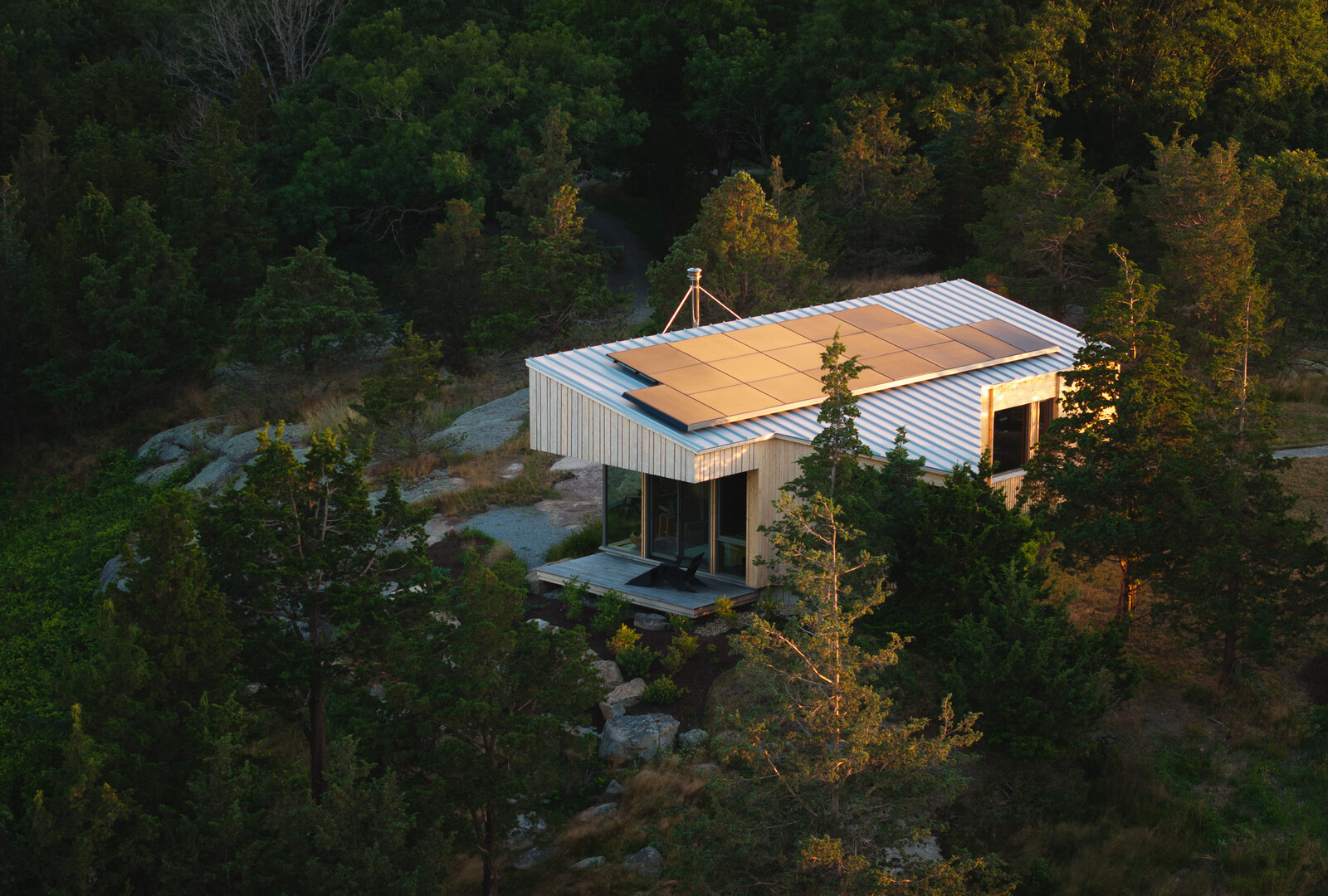Viewing decks and floor-to-ceiling glass doors aim to elevate the experience of the Sierra de Arteaga mountain range.
Houses We Love: Every day we feature a remarkable space submitted by our community of architects, designers, builders, and homeowners. Have one to share? Post it here.
Project Details:
Location: Sierra de Arteaga, Mexico
Architect: S-AR / @stacionarq
Builder: Daniel Hernandez
Photographer: Recording Architecture / @recording.architecture
From the Architect: “Madriguera is the first hospitality complex of a mountain-travel initiative focused on experiencing nature through architecture and design. In this first stage, the project consists of two cabins: Cabaña Conejos (Rabbits Cabin) and Cabaña Liebre (Hare Cabin), each with its own identity and footprint, yet built with a consistent palette of materials: wood, concrete, steel, and glass. Both are located on the west side of a long stretch of land with a slight slope, and take advantage of this condition in order to serve as observation decks for the landscape and mountains which they face across a small valley. Behind the cabins, the forest rises from the mountains. The view facing the front valley is directed toward an imposing mountain range of light-colored rocks that change hue as the sun shifts the lighting at dusk or dawn, taking on purple or pink tones.
“Cabaña Liebre is a small glamping cabin, barely the size of a regular camping tent. It has its own bathroom and indoor kitchen and is surrounded by a small terrace along its perimeter, where a portable fireplace can be stationed. This cabin is built using a mixed structure of concrete supports and steel frames, and finished with walls and a roof made of both exterior and interior wooden boards with thermal insulation between them. The bathroom and storage units are a concrete box that lies within the wooden box that constitutes the cabin.
“Cabaña Conejos is a larger cabin, fitting a room with a queen-size bed as well as a kitchen, a dining room, and a living room space that can be converted into an additional bedroom when more users need to be accommodated. This cabin is built with load-bearing concrete block walls and slabs of concrete with brick hollow block. The exterior is given a layer of thermal insulation, which is held together by a skin of black-painted wooden boards. The interior flooring consists of wooden planks with a natural finish and the walls and ceiling are covered with a mixture of cement and black paint. It also has space for study or work, a bathroom, balcony, access terrace, and a 360-degree viewing deck on the rooftop.”

Photo by Recording Architecture

Photo by Recording Architecture

Photo by Recording Architecture
See the full story on Dwell.com: Can Architecture Enhance Nature? A Pair of Complementary Tiny Cabins in Mexico Say “Yes”
Related stories:



